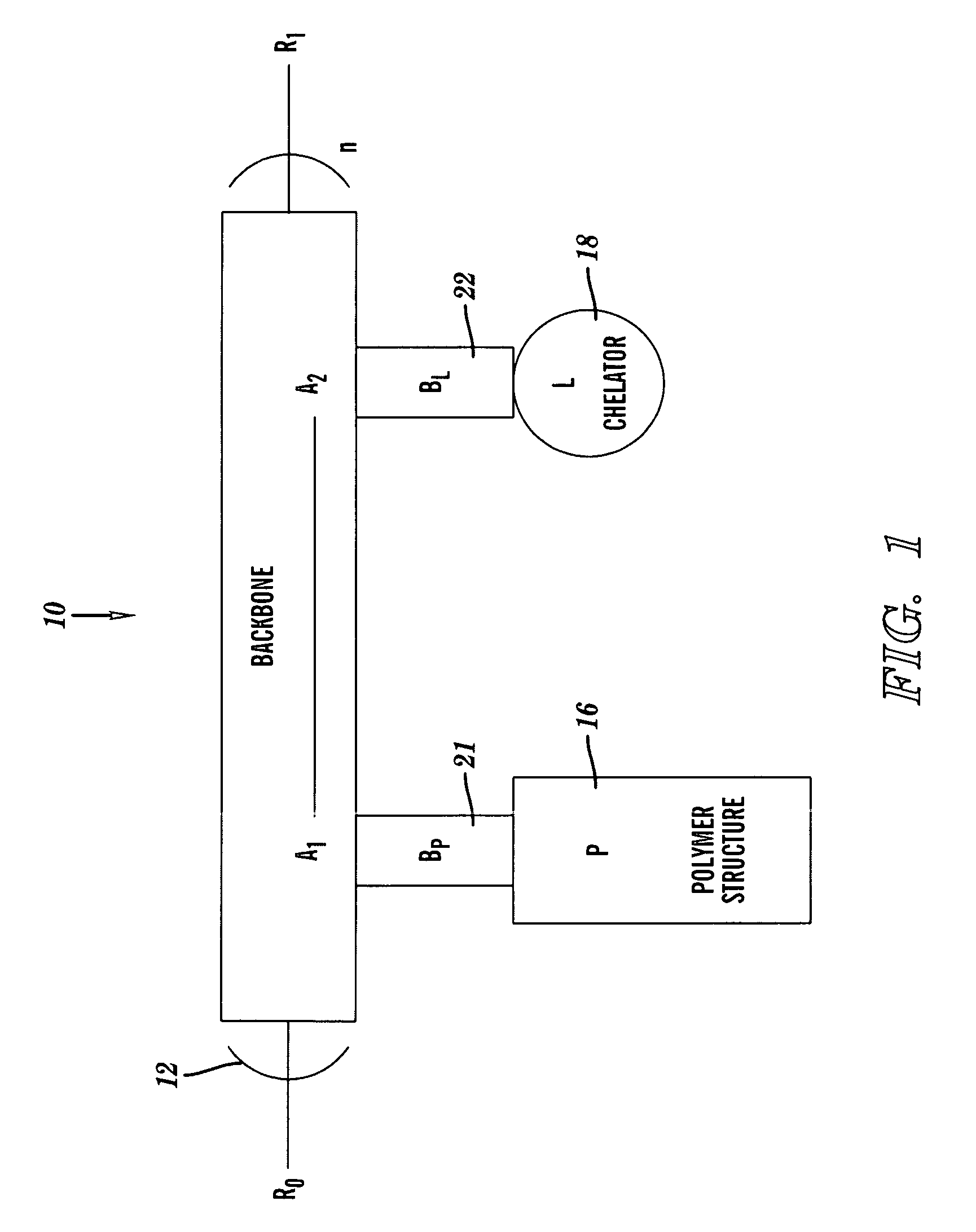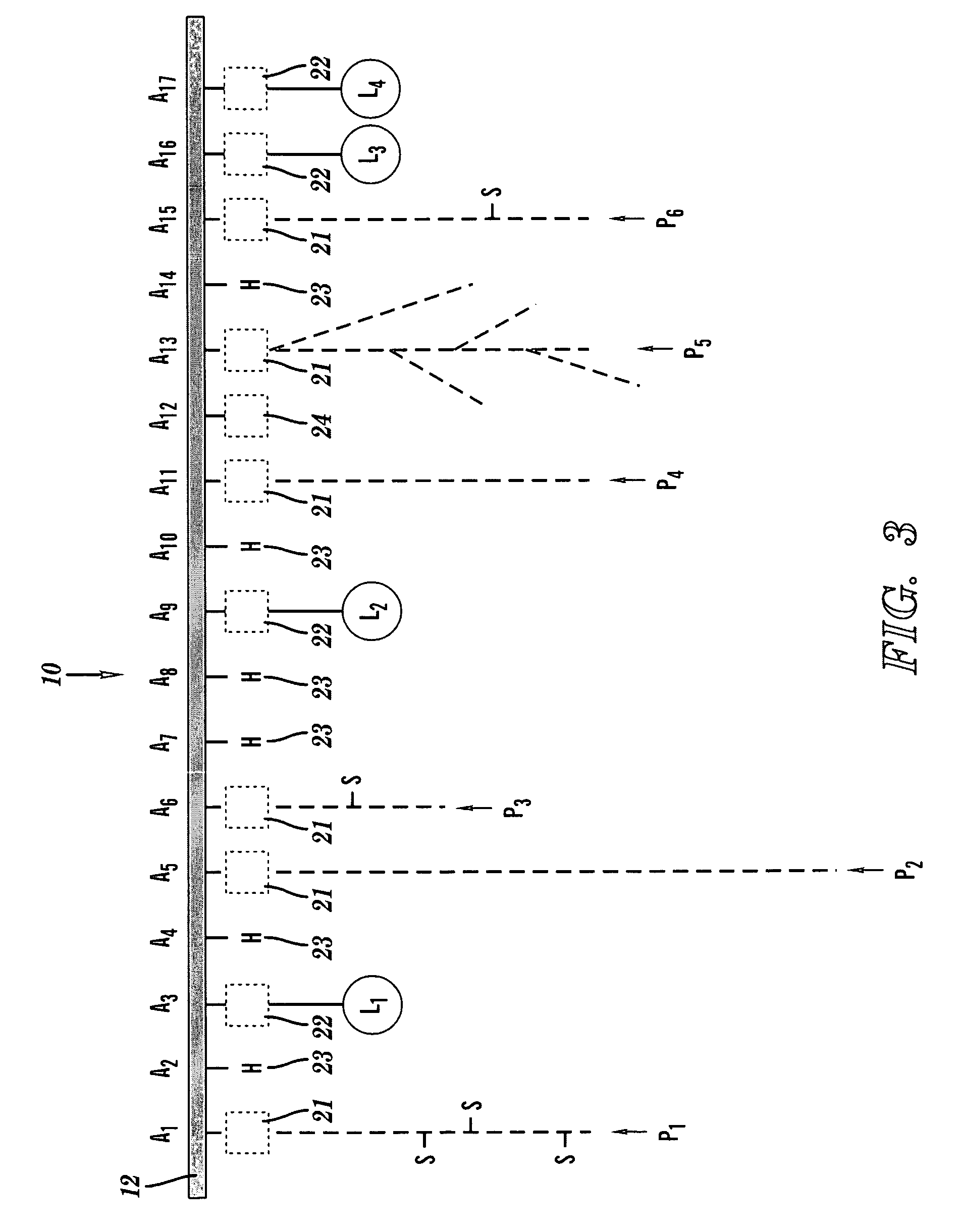High molecular weight chelation structure
a chelation structure and molecular weight technology, applied in radiation therapy, pharmaceutical non-active ingredients, therapy, etc., can solve the problems of short vascular retention time, high cost, and toxicity of current metal chelators, and achieve the effect of less toxicity and increased vascular retention
- Summary
- Abstract
- Description
- Claims
- Application Information
AI Technical Summary
Benefits of technology
Problems solved by technology
Method used
Image
Examples
Embodiment Construction
[0044]The detailed description of the invention is divided into the following sections:
[0045]1. Structure and Function of the Chelation Structure;
[0046]2. Synthesis of the Chelation Structure; and
[0047]3. Validation of Chelation Structure Functionality.
1. Structure and Function of the Chelation Structure
[0048]FIGS. 1-3 depict a chelation structure 10, in accordance with embodiments of the present invention. FIGS. 1-3 show different details of the chelation structure 10.
[0049]FIG. 1 depicts the chelation structure 10 as comprising the modular components of a backbone 12, bonds 21 and 22, a water-soluble polymer structure (P) 16, and a chelator (L) 18. The backbone 12 is a linear polymer comprising n units represented as (A1-A2)n, wherein A1 and A2 are monomeric backbone units, and wherein n is a positive integer in the range 1≦n≦∞. The linear polymer may be a block copolymer or a terpolymer. A1 and A2 independently comprise the structural form shown in FIG. 2, described infra. In one...
PUM
| Property | Measurement | Unit |
|---|---|---|
| Mass | aaaaa | aaaaa |
| Mass | aaaaa | aaaaa |
| Mass | aaaaa | aaaaa |
Abstract
Description
Claims
Application Information
 Login to View More
Login to View More - R&D
- Intellectual Property
- Life Sciences
- Materials
- Tech Scout
- Unparalleled Data Quality
- Higher Quality Content
- 60% Fewer Hallucinations
Browse by: Latest US Patents, China's latest patents, Technical Efficacy Thesaurus, Application Domain, Technology Topic, Popular Technical Reports.
© 2025 PatSnap. All rights reserved.Legal|Privacy policy|Modern Slavery Act Transparency Statement|Sitemap|About US| Contact US: help@patsnap.com



